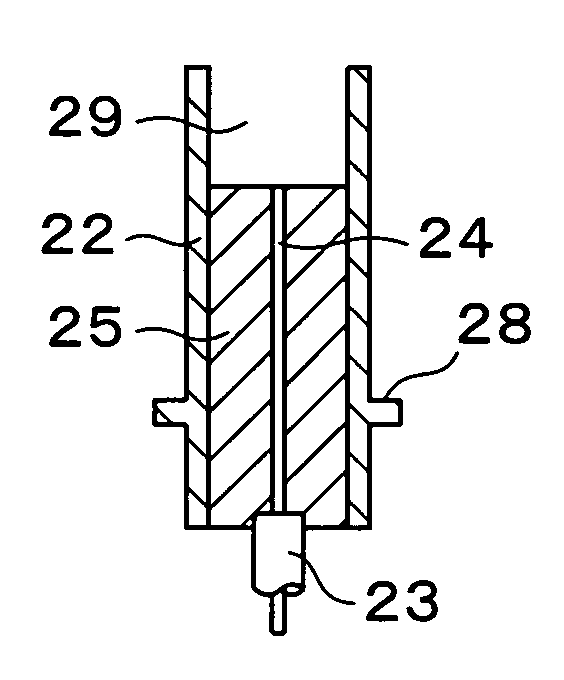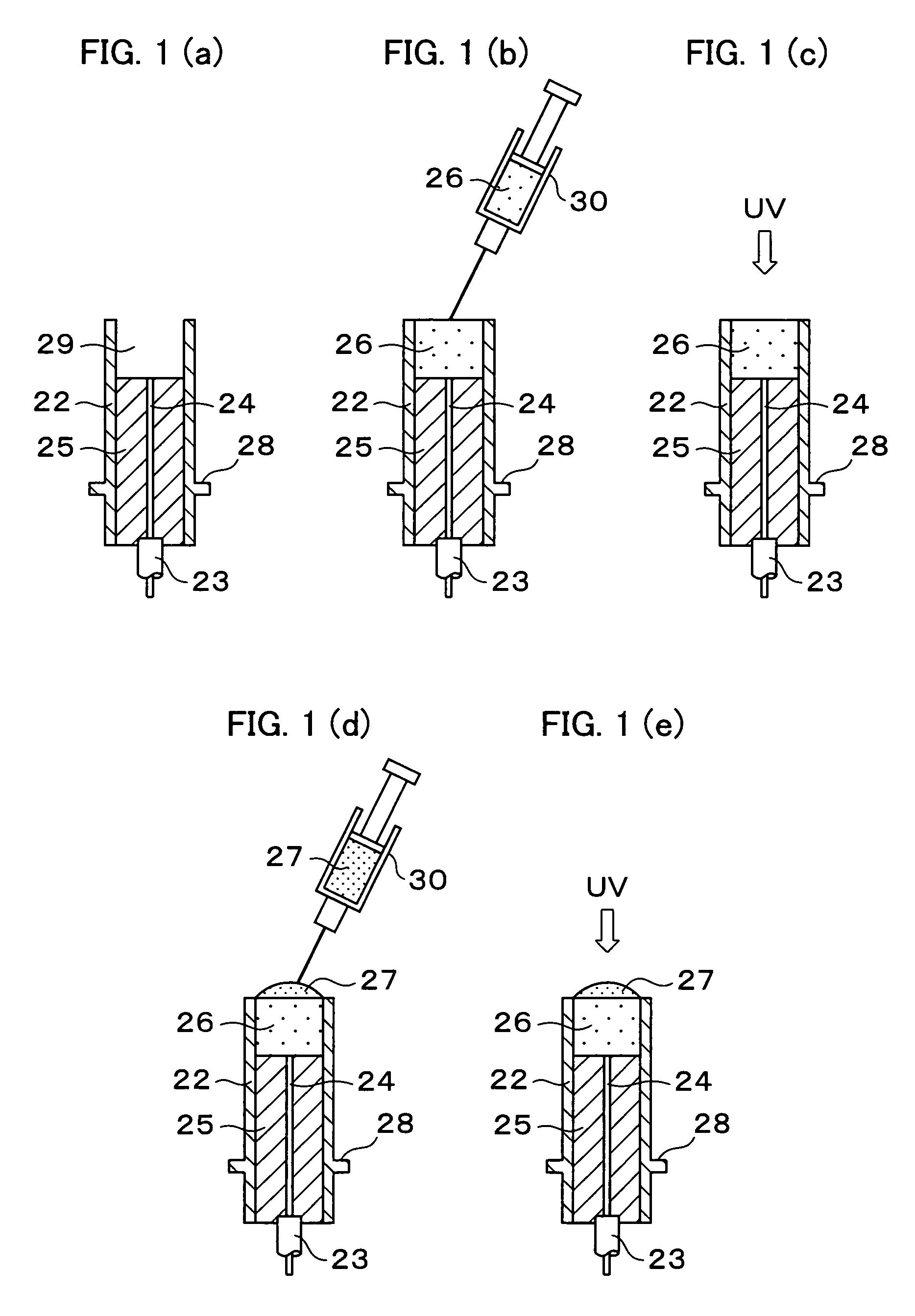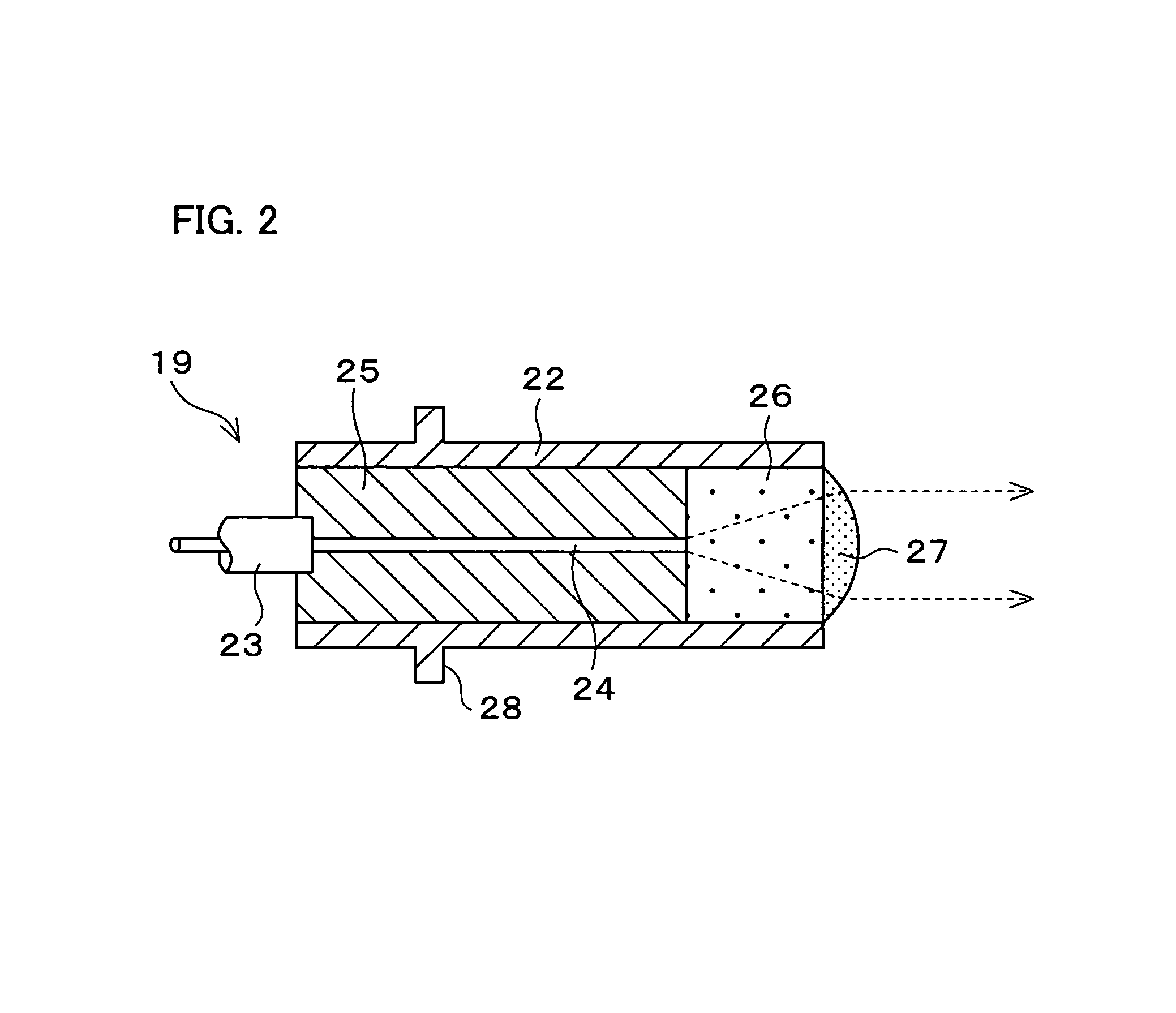Production method for optical lens and production method for optical fiber connector
a production method and technology for optical fibers, applied in the field of optical lens production methods, can solve the problems of reducing quality and reliability, difficult alignment of difficulty in aligning the optical axis of the optical fiber wire inserted in the connector body b>, so as to reduce the influence of volume shrinkage, improve the light collection characteristic of the optical lens, and facilitate fine adjustment
- Summary
- Abstract
- Description
- Claims
- Application Information
AI Technical Summary
Benefits of technology
Problems solved by technology
Method used
Image
Examples
example
[0069]The present invention is explained in more detail referring to Examples. It should be noted that the present invention is not limited to these Examples.
first example
[0070]First, after an ultraviolet hardening resin MP121 (hardened resin refraction index; 1.55, produced by Mitsubishi Rayon Co., Ltd.) was injected as a first resin into a resin-injection portion of an optical fiber connector, ultraviolet rays were irradiated onto the first resin to harden the first resin. Next, an ultraviolet hardening resin UT1059 (hardened resin refraction index; 1.58, produced by Mitsubishi Rayon Co., Ltd.) was injected, as a second resin, on the first resin in order to form a pre-lens. Next, while a wave front aberration of light transmitting the pre-lens was measured with a shack hartmann wave front instrument, the ultraviolet rays were irradiated, when the wave front aberration got close to 0, in order to harden the second resin to produce a collimator lens of the optical fiber connector. The wave front aberration of the collimator lens obtained was not more than 1λ (λ: 1.3 μm), and a lens length was 2.8 mm. Note that, there were substantially no difference ...
second example
[0071]A collimator lens of an optical fiber connector was produced in the same way as the First Example except that an ultraviolet hardening resin MP121 (hardened resin refraction index; 1.55, produced by Mitsubishi Rayon Co., Ltd.) was used as a first resin and a second resin. A wave front aberration of the collimator lens obtained was about 2λ, and a lens length was 2.8 mm. Note that, there were substantially no difference between the wave front aberration of the unhardened collimator lens and the wave front aberration of the hardened collimator lens.
PUM
| Property | Measurement | Unit |
|---|---|---|
| diameter | aaaaa | aaaaa |
| core diameter | aaaaa | aaaaa |
| diameter | aaaaa | aaaaa |
Abstract
Description
Claims
Application Information
 Login to View More
Login to View More - R&D
- Intellectual Property
- Life Sciences
- Materials
- Tech Scout
- Unparalleled Data Quality
- Higher Quality Content
- 60% Fewer Hallucinations
Browse by: Latest US Patents, China's latest patents, Technical Efficacy Thesaurus, Application Domain, Technology Topic, Popular Technical Reports.
© 2025 PatSnap. All rights reserved.Legal|Privacy policy|Modern Slavery Act Transparency Statement|Sitemap|About US| Contact US: help@patsnap.com



